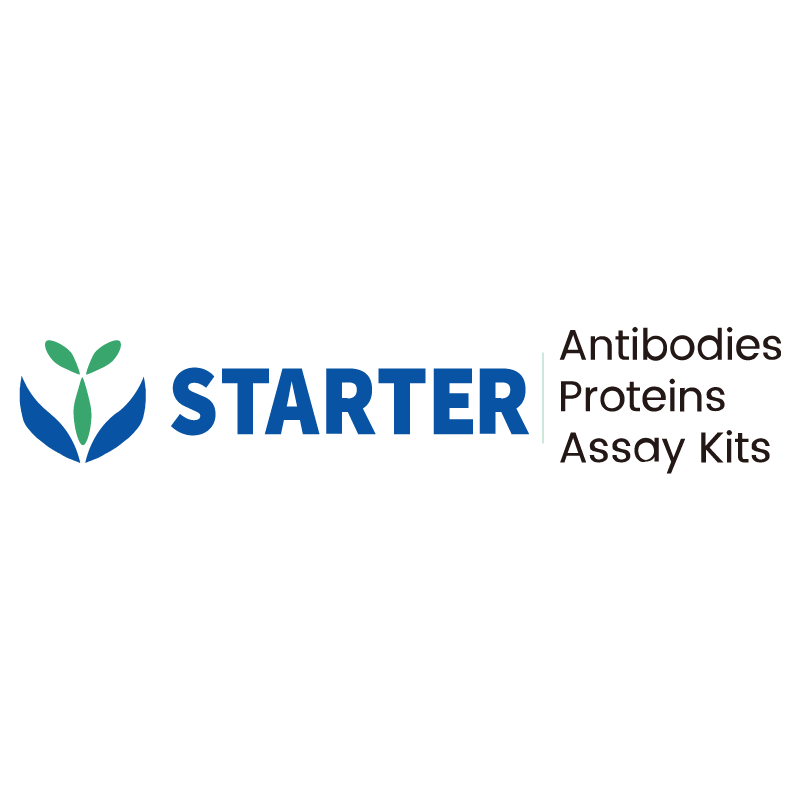WB result of VPS26 Rabbit pAb
Primary antibody: VPS26 Rabbit pAb at 1/1000 dilution
Lane 1: K562 whole cell lysate 20 µg
Lane 2: Caco-2 whole cell lysate 20 µg
Lane 3: Daudi whole cell lysate 20 µg
Lane 4: Jurkat whole cell lysate 20 µg
Lane 5: HeLa whole cell lysate 20 µg
Secondary antibody: Goat Anti-rabbit IgG, (H+L), HRP conjugated at 1/10000 dilution
Predicted MW: 38 kDa
Observed MW: 38 kDa
Product Details
Product Details
Product Specification
| Host | Rabbit |
| Antigen | VPS26 |
| Synonyms | Vacuolar protein sorting-associated protein 26A; Vesicle protein sorting 26A (hVPS26) |
| Immunogen | Synthetic Peptide |
| Location | Cytoplasm |
| Accession | O75436 |
| Isotype | IgG |
| Application | WB, IHC-P, IP |
| Reactivity | Hu, Ms, Rt |
| Predicted Reactivity | Bv |
| Purification | Protein A |
| Concentration | 0.5 mg/ml |
| Conjugation | Unconjugated |
| Physical Appearance | Liquid |
| Storage Buffer | PBS, 40% Glycerol, 0.05% BSA, 0.03% Proclin 300 |
| Stability & Storage | 12 months from date of receipt / reconstitution, -20 °C as supplied |
Dilution
| application | dilution | species |
| WB | 1:1000 | |
| IP | 1:50 | |
| IHC-P | 1:250 |
Background
VPS26 is a protein that is part of the retromer complex, which is involved in the sorting and trafficking of proteins within cells. The retromer complex plays a crucial role in the endosomal/lysosomal system and is responsible for the transport of proteins from endosomes back to the Golgi apparatus. There are two paralogs of VPS26 in mammals, VPS26A and VPS26B, each with distinct functions and localization within cells. VPS26C, also known as Down syndrome critical region gene 3 (DSCR3), is a protein that has gained attention for its potential as a therapeutic target and biomarker. It is involved in protein trafficking and sorting within the cell and has been implicated in various biological processes, including immune responses and cellular development. VPS26C is considered to have a broad application prospect in medical research and clinical applications, particularly in the treatment of diseases such as cancer and neurodegenerative disorders. It can serve as a modifiable inhibitory system for treating a variety of diseases by regulating the activity of certain proteins within the cell.
Picture
Picture
Western Blot
WB result of VPS26 Rabbit pAb
Primary antibody: VPS26 Rabbit pAb at 1/1000 dilution
Lane 1: mouse kidney lysate 40 µg
Secondary antibody: Goat Anti-rabbit IgG, (H+L), HRP conjugated at 1/10000 dilution
Predicted MW: 38 kDa
Observed MW: 38 kDa
WB result of VPS26 Rabbit pAb
Primary antibody: VPS26 Rabbit pAb at 1/1000 dilution
Lane 1: rat kidney lysate 40 µg
Secondary antibody: Goat Anti-rabbit IgG, (H+L), HRP conjugated at 1/10000 dilution
Predicted MW: 38 kDa
Observed MW: 38 kDa
IP
VPS26 Rabbit pAb at 1/50 dilution (1 µg) immunoprecipitating VPS26 in 0.4 mg K562 whole cell lysate.
Western blot was performed on the immunoprecipitate using VPS26 Rabbit pAb at 1/1000 dilution.
Secondary antibody (HRP) for IP was used at 1/1000 dilution.
Lane 1: K562 whole cell lysate 20 µg (Input)
Lane 2: VPS26 Rabbit pAb IP in K562 whole cell lysate
Lane 3: Rabbit monoclonal IgG IP in K562 whole cell lysate
Predicted MW: 38 kDa
Observed MW: 38 kDa
Immunohistochemistry
IHC shows positive staining in paraffin-embedded mouse stomach. Anti-VPS26 antibody was used at 1/250 dilution, followed by a HRP Polymer for Mouse & Rabbit IgG (ready to use). Counterstained with hematoxylin. Heat mediated antigen retrieval with Tris/EDTA buffer pH9.0 was performed before commencing with IHC staining protocol.
IHC shows positive staining in paraffin-embedded rat stomach. Anti-VPS26 antibody was used at 1/250 dilution, followed by a HRP Polymer for Mouse & Rabbit IgG (ready to use). Counterstained with hematoxylin. Heat mediated antigen retrieval with Tris/EDTA buffer pH9.0 was performed before commencing with IHC staining protocol.


